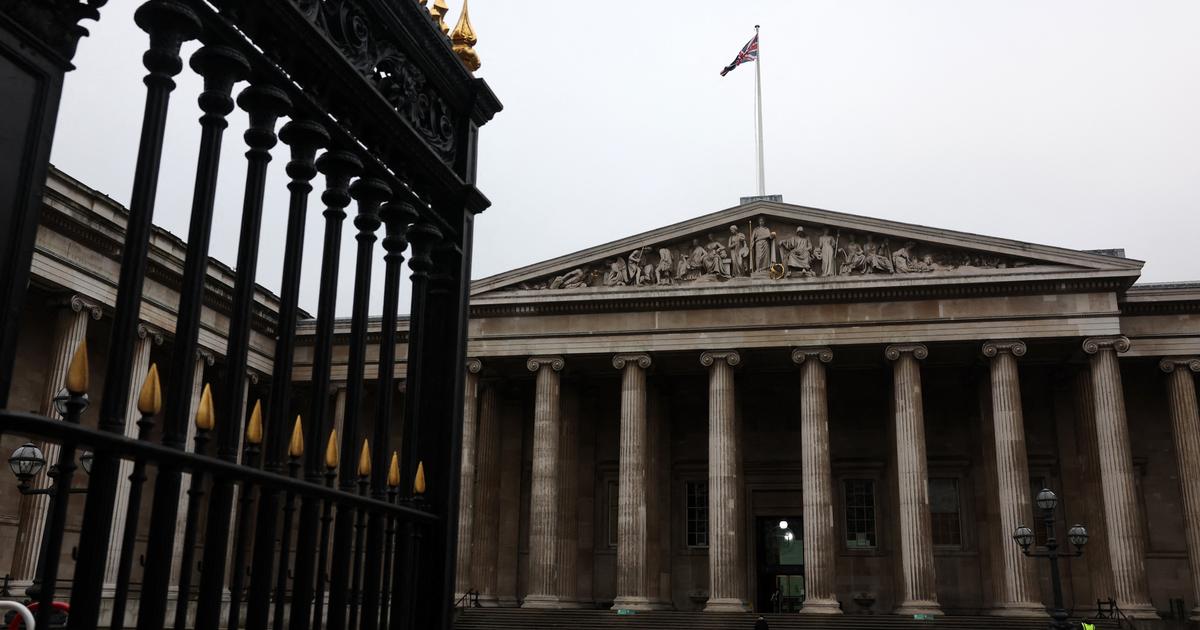First there is admiration, then conquest followed by contempt. Finally imitation and plagiarism arrive. That is when it is revealed that no one wins definitively and no one is completely defeated. When the Spartan general Pausanias, after proclaiming himself victorious in the battle of Plataea (479 BC) against the Persian army, entered the tent that served as the palace of Emperor Xerxes, he beheld "an abundance of treasures, furniture of gold and silver," says the historian Herodotus. "First of all, surrounded by curtains embroidered with rhinestones... I could hardly believe his eyes."
More information
The never-ending history of the Parthenon statues: Boris Johnson won't bring them back to Greece either.
The father of history contributed, with his narrative skill, to the creation of the Persian stereotype that justified the Greek victory. "The key words are contained in that last sentence, 'I could hardly believe their eyes.' That was a world based on perceptions, and Herodotus leads us to a story that aims to explain how the small network of city-states that were then the Greeks achieved such spectacular victories in their fight against the greatest empire known to that time, which lurked from its eastern border, "explains James Fraser, curator of the Ancient Levant and Anatolia of the London British Museum (British Museum) and one of those responsible for the exhibition Luxury and power. From Persia to Greece. "When faced with this whole world of refinement, the conclusion of the text is clear: no one is surprised that the Persians were the losers. They had become a corrupt, weak and effeminate people because of a life of luxury. They had become a decadent people," Fraser says with some irony.
Irony, because the purpose of the exhibition is precisely the opposite. Through decorative objects and luxury utensils, collected from the different corners of that empire – from present-day Greece to Asia Minor, on the Turkish coast, passing through Italy, Afghanistan or Bulgaria – the museum tells how the Achaemenid dynasty founded by Cyrus II the Great used, for more than 500 years, the brightness and seduction of jewels. tableware and clothing to establish and mark a concept of political authority. The satraps who ruled the Persian dominions imitated this luxury, albeit with more modest budgets. Tyre purple, or royal purple, which Phoenician artisans from Lebanon and North Africa extracted from the murex sea snail, was a color associated with power at the Achaemenid court. A cuneiform tablet from Iraq contains instructions for achieving a similar color through plant extracts. The imitation of luxury as an aspiration for power.
"The history of luxury encompasses much more than the binary tale of Persia and Greece. Moreover, that Greco-Persian world was actually a network of hundreds of groups with different cultures. And this exhibition helps to understand how different styles of luxury connected those cultures despite the political boundaries that divided them," explains the director of the British Museum, Hartwig Fischer.
The golden funeral wreath from Turkey, originally from the Macedonian court, one of the stars of the exhibition. BRITISH MUSEUM
The only downside that can be reproached to an exhibition whose approach is certainly original is in the decoration of silk gauze and false Greek columns, which give an appearance of theme park to a route that forcibly had to be discreet in its scenography, because everything is reduced to the multiple showcases that collect rings, bracelets, necklaces, plates, or the star figures of the exhibition: the elaborate ritons or pouring vessels, of gold and silver, that the Persian aristocracy used in their libation ceremonies, to drink an exquisite wine – without lowering with water, unlike the Greeks. In one hand the riton was held, and in the other the deep plate in which little by little the broth was poured. Balance as a symbol of elegance and moderation. "I always think of the phrase of Coco Chanel, the French designer: 'Luxury begins where necessity ends'. If you are using these delicate vessels to pour wine, clearly the rite goes beyond necessity. It is a way of celebrating the authority of the Persian monarch, who collects the most delicate resources and uses the best craftsmen that exist throughout his empire," explains Fraser.
From Greek modesty to Alexandrian luxury
The exhibition contains several of the pieces of the Thracian treasure of Panagyurishte, the Bulgarian city where the Deikov brothers, who were digging for clay in 1949, found more than six kilos of gold in the form of rhytons, amphorae and enocoes (wine jugs), all decorated with Greek mythological scenes or scenes from Homer's Iliad.
The Thracian treasure of Panagyurishte, six kilos of gold in the form of amphorae and ritons found in 1949 in Bulgaria.BRITISH MUSEUM
Greek contempt for the Persians did not encompass their luxury and refinement, and the wealthy classes sparingly imitated a style and elegance they admired. "Nothing in excess," read the inscription on the Temple of Apollo at Delphi. Athens, for example, increased in power and wealth after the Greco-Persian Wars, and luxurious objects from the East arrived in abundance. Personal ostentation was considered, however, a threat to stability and social order, so the Athenians looked for ways to imitate, in clay and less noble metals, the sophistication of their political enemies.
The synthesis came with Alexander. His sculptures imitate the splendor of the Persian emperors or the Egyptian pharaohs. He defeated an empire, forged one of his own, raised a new Hellenic era in which he retained some of the Persian governors or satraps, established his court in the tent of Darius III, and embraced luxury and symbols of power that the ancient Greeks had so detested. The treasure of Panagyurishte, from the Thracian court, is a reflection of this synthesis. Or the funeral crown of pure gold, the central object of the exhibition, from Turkey, which demonstrates the acceptance of luxury in the confines of the Alexandrian empire after his death, in 323 BC. C.
At the entrance of the exhibition, as a defiant hieroglyph, two showcases face the busts, in stone and bronze, of a Persian with ringlets and a snail-beard – presumably smeared in perfumed oil – and of the Greek god Apollo, with a simple and youthful face, without shaving or excesses. Plain and pure Greece versus decadent Persia? Not so obvious. Both sculptures were discovered in Cyprus. They come from the fifth century BC. C. and it is very possible that they shared a temple, because in the same place Apollo and the plague god Resef were worshipped.
"Now we suffer the calamities of a long peace. Luxury has settled among us, crueler than combat, thus avenging the world we once conquered. Dirty money imported foreign modes and mannered wealth that corrupted our era with disgusting decay," wrote the Roman poet Juvenal. His words close an exhibition with a moral: luxury is irresistible, but it needs a culprit to justify its excesses.
Subscribe to continue reading
Read without limits
Read more
I'm already a subscriber

/cloudfront-eu-central-1.images.arcpublishing.com/prisa/QLNRZL2PX5A4RF2GH6RFJQM4FE.jpeg)




/cloudfront-eu-central-1.images.arcpublishing.com/prisa/YAS3TNGA5BE5HP6LPTTHYXGNGQ.jpg)








